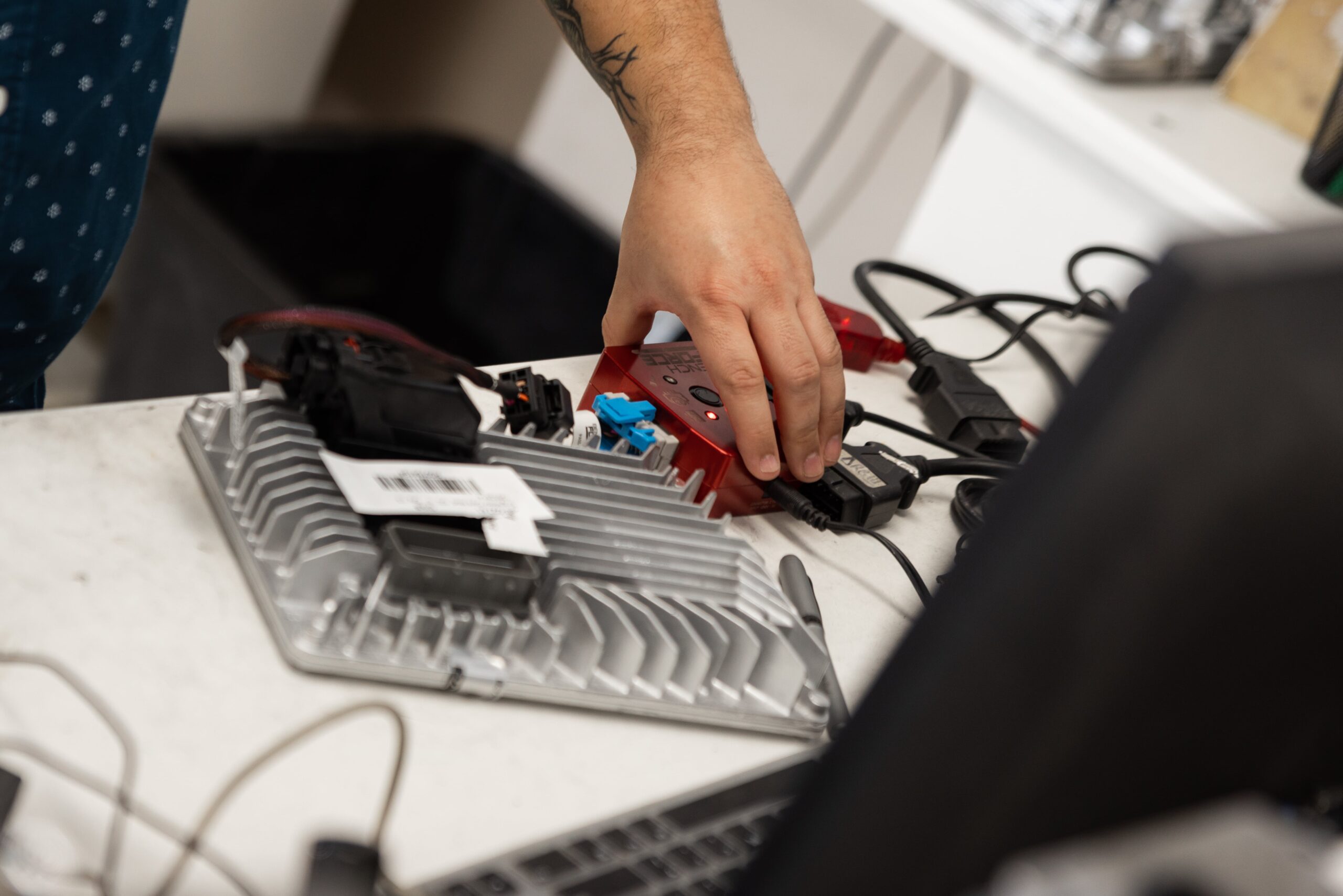Introduction
The Engine Control Module (ECM), in your vehicle is central to managing your vehicle’s performance, fuel efficiency, and emissions. Like any other intricate system, it sometimes signals issues through error codes, helping mechanics diagnose and address various problems. From O2 sensors to ignition coils, each code provides insights into your vehicle’s health. In this post, we’ll cover five common ECM error codes you may encounter, the symptoms they cause, and what they mean for your car’s performance and safety. Let’s dive into these critical codes to understand what may be happening under the hood.
O2 Sensor Error Codes
Much like the oxygen we need, our cars rely on the oxygen (O2) sensors to maintain optimal combustion and emissions. If the O2 sensor malfunctions, symptoms like poor engine performance, rough idling, and reduced fuel efficiency are often the first signs. A malfunctioning sensor may also set off the check engine light, signaling the need for inspection. Common O2 sensor ECM error codes include:
- P0133: Indicates slow sensor response, typically caused by a contaminate or degraded sensor.
- P0130: Signals a fault in the sensor circuit, possibly affecting other sensors as well.
- P0138: Often triggered by incorrect voltage reading due to contamination or damage.
Keeping track of your fuel efficiency can help catch these issues early since reduced mileage is a common symptom of failing O2 sensors.
Fuel Injector Error Codes
Fuel injectors are vital for delivering the precise amount of fuel to the engine. However, over time they can clog due to the fuel residue that comes from the deposits that form from fuel droplets that evaporate when the engine is shut off. The symptoms, such as rough idling, are similar to ignition or compression problems – which makes it tricky to pinpoint. Common fuel injector ECM error codes include:
- P0171 and P0174: Indicate the engine is running lean, often caused by a clogged or leaking injector.
- P0300 to P0308: These codes relate to engine misfires, which may be due to injector issues among other possible causes.
If you’re experiencing rough idling or poor fuel economy, these codes may suggest the need for injector cleaning or replacement.
Ignition Coil Error Codes
The ignition coil is essential in starting your engine and maintaining a smooth ride. Faulty ignition coils can lead to poor engine performance, misfires, and inefficient fuel use. A common ECM error code here is:
- P0356: This error points to an issue in the ignition coil’s circuit. These stem from a defective coil, loose wiring, or even a poor connection.
If you’re diagnosing these on your own, it can prove to be difficult since the code shares common triggers and symptoms. All vehicles are built differently so be sure your automotive knowledge is up to date with any resources you have available.
MAP & MAF Error Codes
The MAP (Manifold Absolute Pressure) and MAF (Mass Airflow) sensors regulate air intake and pressure. This helps the ECM determine the right fuel mixture, like a perfectly curated recipe. When these sensors misread, it can compromise fuel efficiency and even damage the catalytic converter. The main ECM error code associated here is:
- P0068: This code signals inconsistent sensor readings, often due to a dirty air filter, vacuum leaks, or sensor faults.
These type of ECM error codes are not to be messed with and are considered severe. While the error will affect how efficiently the engine runs, it can also cause damage to the catalytic converter, making the vehicle undriveable. Given the severity of this error, keep in mind this is an intermediate-level diagnosis that should not be handled by beginners.
Miscommunication Error Codes
As you may have noticed, all the error codes we’ve gone over have started with the letter P. In vehicle error codes, the first number in the code denotes whether the code is generic or manufacturer-specific. Meanwhile, the last three numbers indicate the actual trouble code. In the previous instances, P stands for an issue in the powertrain. Meanwhile the last of the common error codes we’ll be going over are miscommunication errors. These will start with the letter U as a way to indicate communication or network errors. Since these encompass a whole category of error that can come up, we’ll keep it brief with a guide to them all here.
To summarize, miscommunication error codes can be caused by an open or shorted communication harness, a faulty Engine Control Module (ECM) or a poor harness ground connection. Besides the common symptoms of a check engine light and poor engine performance, these could even lead to a complete engine shutdown. These communication issues are important to address to make sure they don’t lead to further damage. Especially, since the miscommunication can mean the control modules don’t pick up on issues in the system the communication has dropped. Much like you and I, if we don’t communicate the issues we’re having, vehicles can implode whenever you can’t address the issue.
Conclusion
Error codes serve as a valuable roadmap for diagnosing and fixing engine issues before they escalate. Understanding the signs and causes behind each code can save you time, money, and stress. From oxygen sensors to miscommunication issues, these common codes remind us that regular maintenance is key to keeping your vehicle in peak condition. So next time your check engine light comes on, you’ll have a better idea of what could be behind it and what steps to take to keep your engine running smoothly.
Contact Us
Ready to start with an Electronic Control Module tailored to your needs? Fill out the form below, and we’ll help you find the perfect solution. Complete in a minute, and our team will provide the expert support and service you need.
